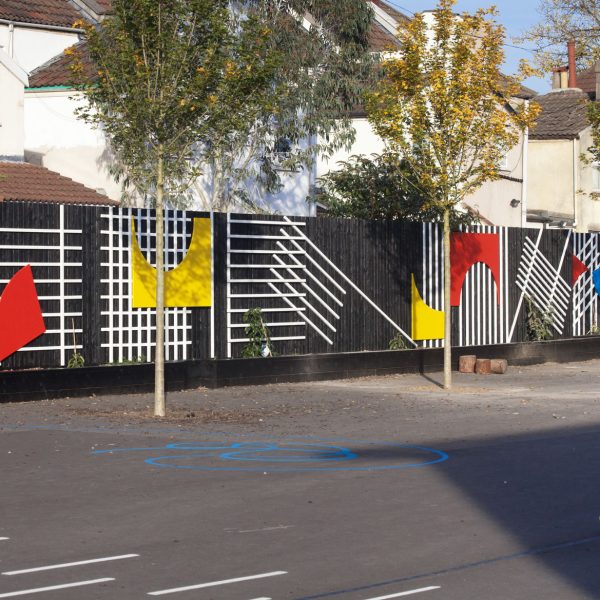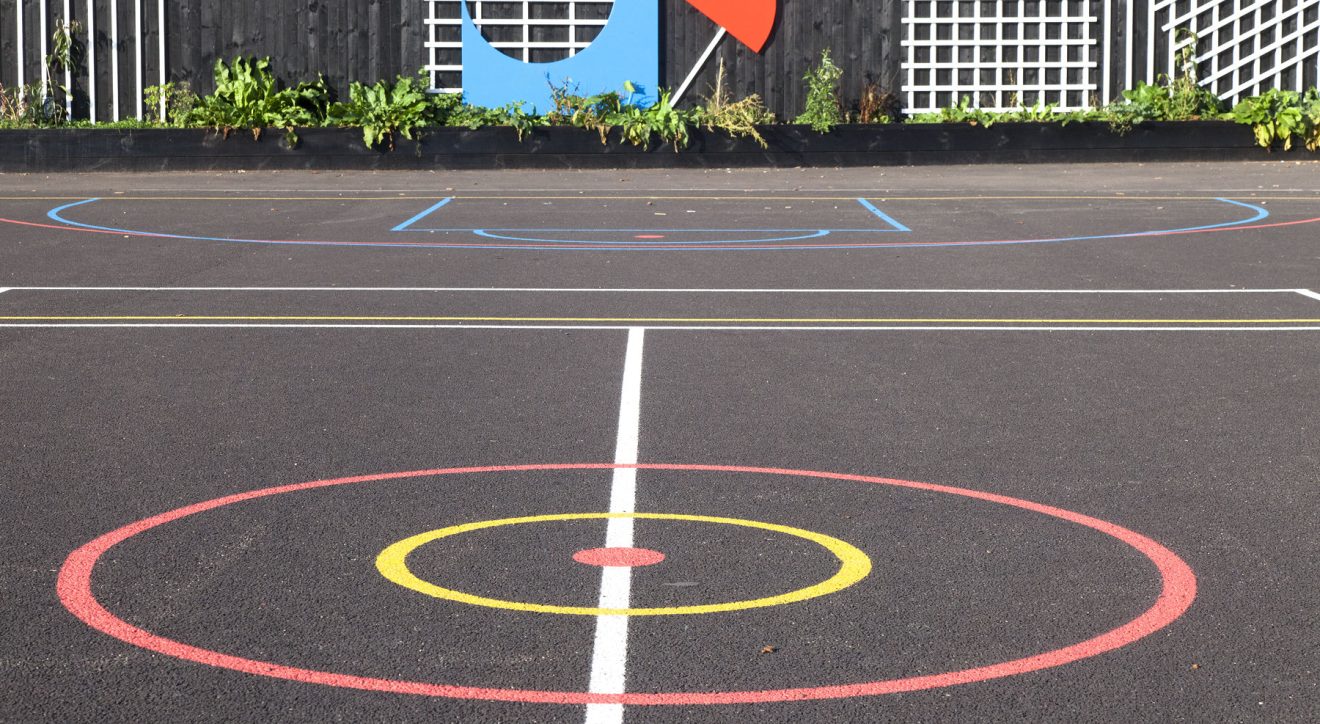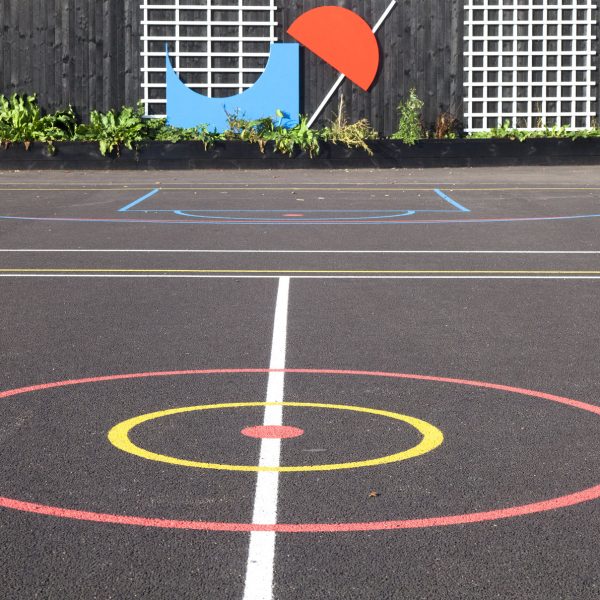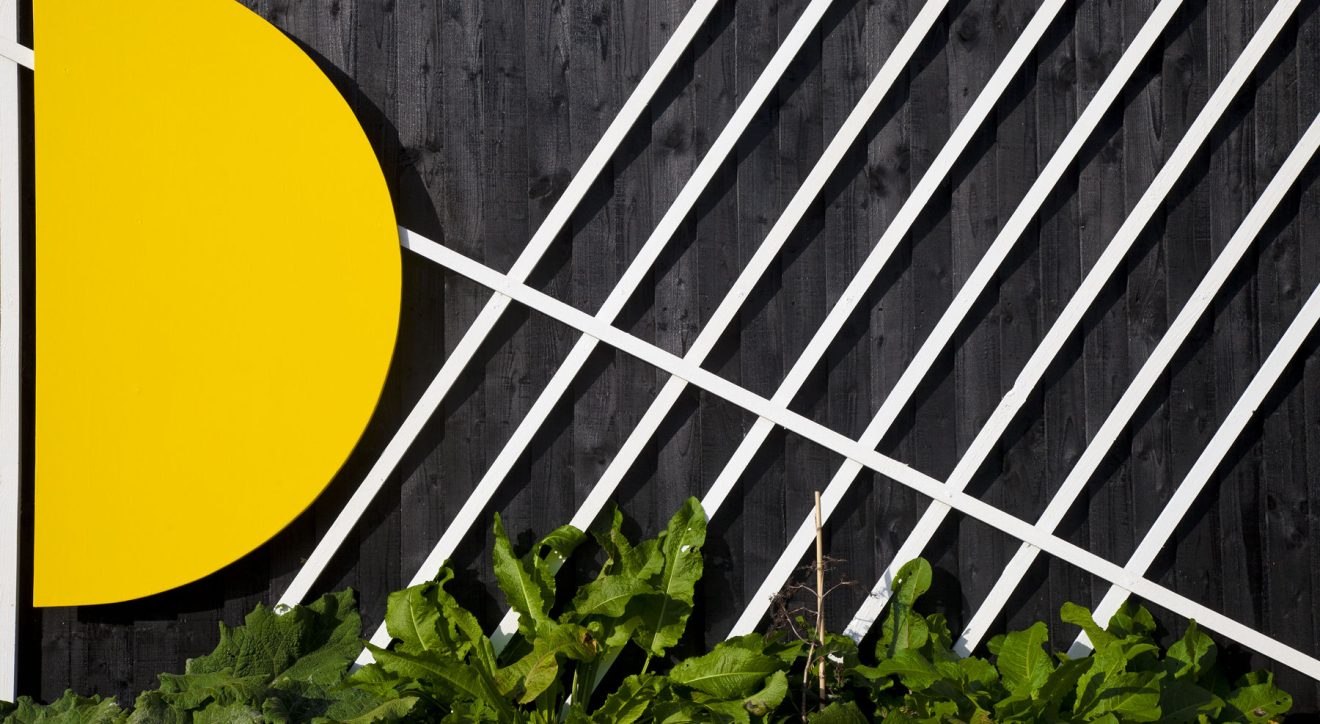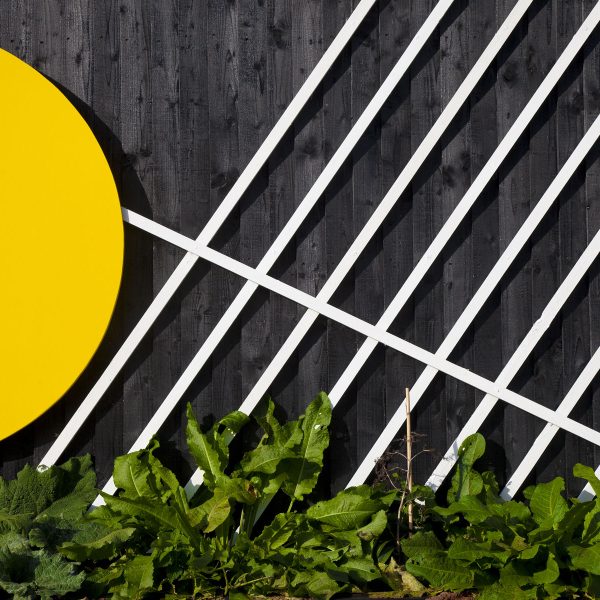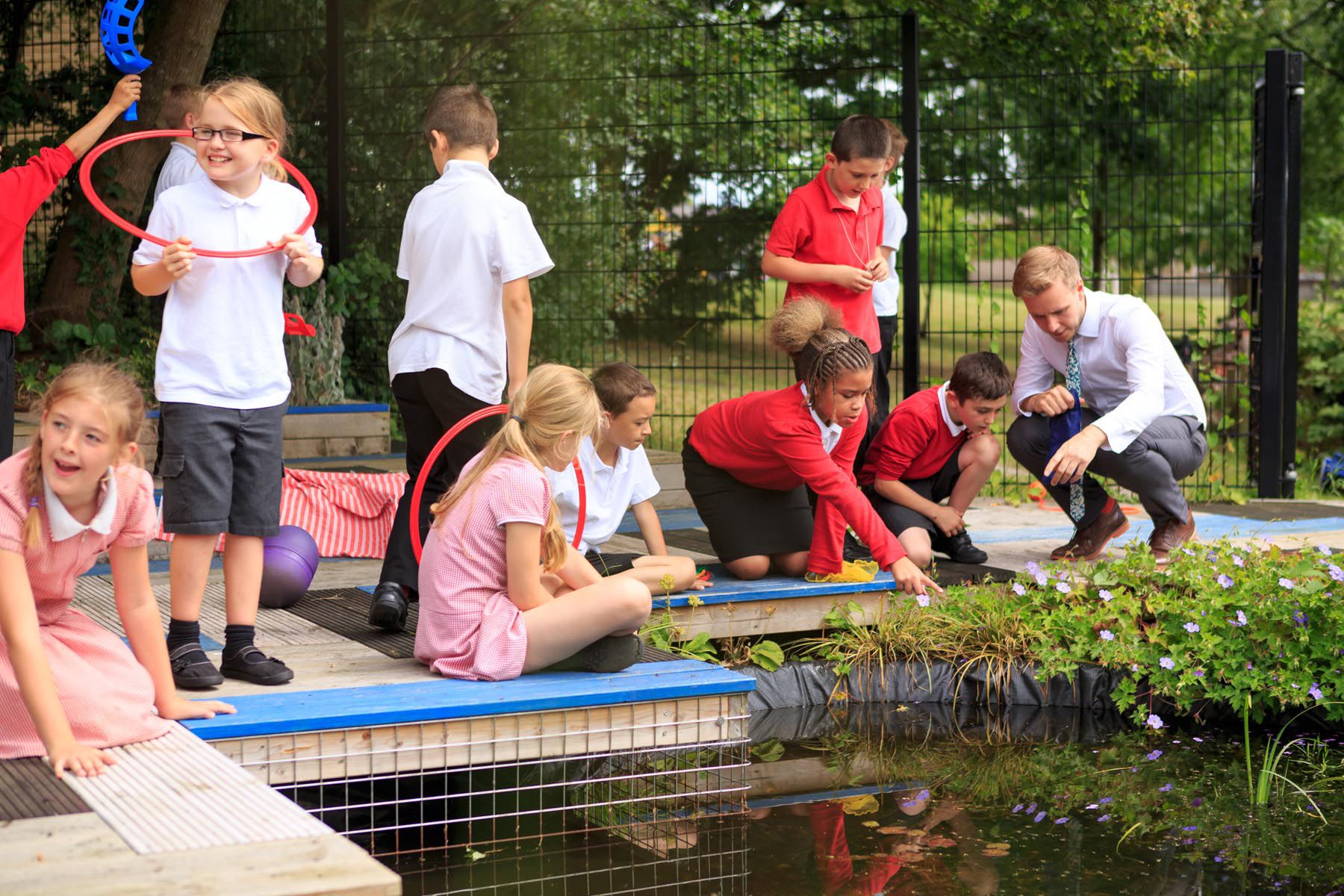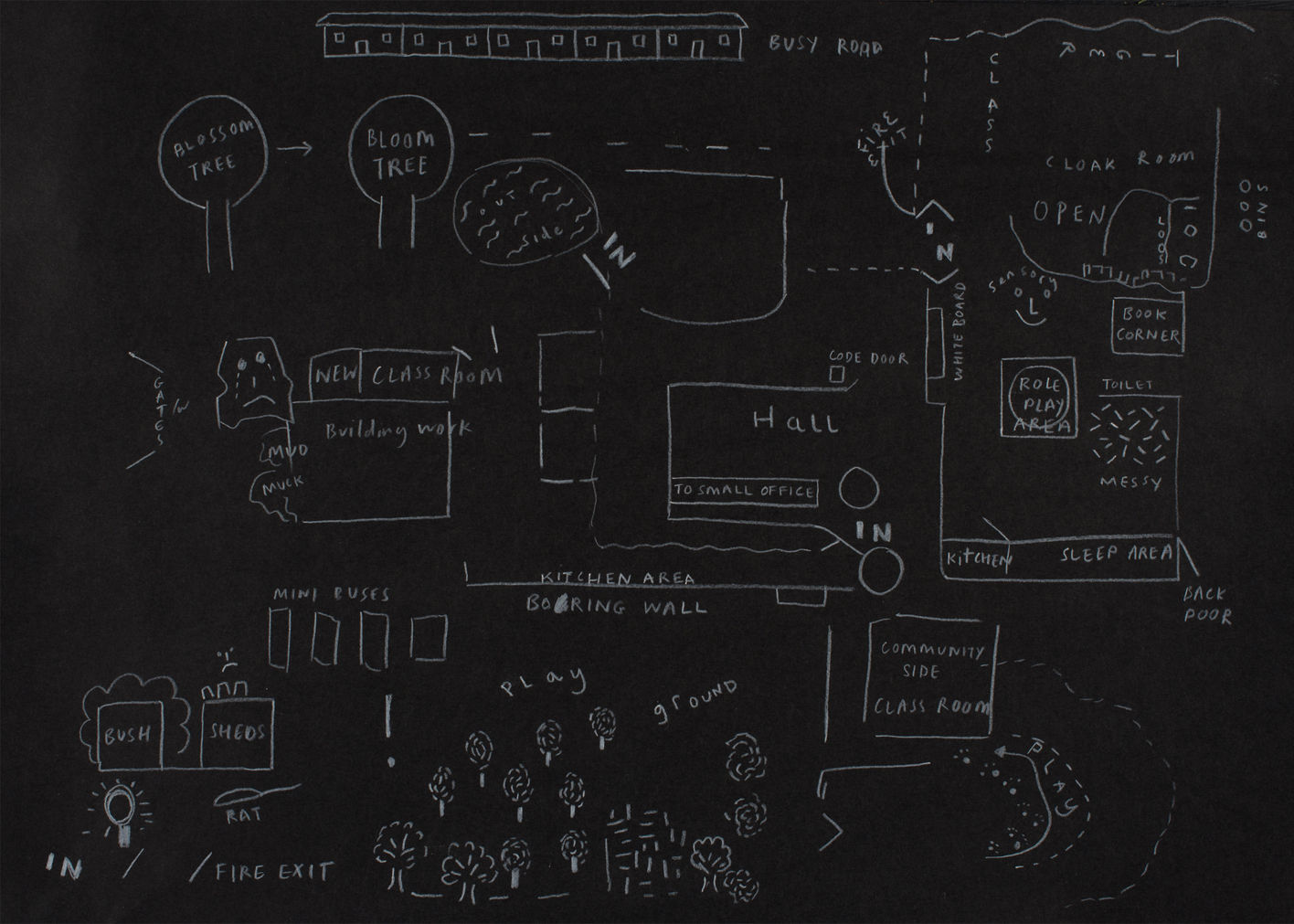
Synopsis
The development of Redfield Educate Together Primary Academy is part of Bristol City Council’s Primary/Bristol series of artist commissions for primary schools commissioned as part of the Primary Capital Education Programme. As part of the development British artists Simon & Tom Bloor were commissioned by project curators Arnolfini and Bristol City Council to develop an art work for the school working closely with pupils, teaching staff and Head Teacher Ros Farrell.


Simon & Tom Bloor’s artworks and projects draw on the histories and fabric of the built environment to create a narrative where nostalgia acts as a sort of utopia in reverse, presenting relics of a future that never happened. By offering alternative ways to view and experience the landscape and its associated histories they aim to invite the viewer to reconsider their relationship to place and how they move, play, work or rest in the environment.
For Redfield Educate Together Academy their work ‘Abstract Ideas and Real Situations‘ continues their engagement with the aesthetics of post war art and design, the mechanics of play and the material of the built environment. The work consists of two elements: an extensive floor drawing for the large tarmac playground at the rear of the school, and a large linear frieze which runs the entire length of the schools playground.
The floor drawing takes shapes and forms from a variety of sources to make an abstract playscape. The artists wanted to offer the school something more open and engaging than clichéd numbered rocket ships or alphabet caterpillars that are commonly employed in school playground and the design uses motifs that recur in Simon and Tom’s recent work that reference street markings to create expressionistic drawings. Emerging from the rigid linear markings of the schools MUGA (Multi Use Games Area) the floor markings via off-course, forming an abstract composition that weaves across the site giving scope for undirected play opportunities.
Among the swirling lines are geometric shapes sourced from ‘Learning to See’, a series of creative workbooks published in the late 60’s by designer and educator Kurt Rowland. In Learning to See the shapes are used as an introduction to composition; Abstract ideas and real situations expands on the book’s exercises with the shapes recurring as panels on the wall frieze where they are used to decorate a geometric grid, which in turn acts as a trellis for plant beds. In time plants will grow across the wall, breaking up the rigidity of the grid with their organic forms.
In commenting on their design, and aims, Simon and Tom said: “We want the artwork to act as a background to and catalyst for activity in the school; a playful landscape with a ‘Fisher Price does Modernism’ aesthetic”.
This project has been made possible through funding from Bristol City Council as part of the Primary Capital Education Programme.
Simon and Tom Bloor were born in Birmingham in 1973. They live and work in Birmingham and are amongst the founding directors of Eastside Projects, Birmingham. Their collaborative practice looks at the fabric of urban environments, children’s play and the legacy of Modernism. Solo exhibitions and projects include Urban Studies, The Gallery, De Montfort University, Leicester (2016), Structure for the City Observatory, Collective, Edinburgh (2016), Ludus Folly, Southbank Centre, London (2015), Planning for Play, Site Gallery, Sheffield (2014), Loose Parts, Whitechapel Gallery, London (2013), Happy Habitat Revisited, South London Gallery (2011) and Hit & Miss, Modern Art Oxford (2010). They are amongst the founding directors of Eastside Projects, Birmingham.
Simon and Tom have previously produced a major public artwork, Formula for Living, for Cotham School, Bristol in 2011 as part of Bristol City Council’s Building Schools for the Future programme and also Primary Structure for West Town Lane Academy as part of Bristol City Council’s ‘Primary Capital Programme’.
Arnolfini is one of Europe’s leading independent, contemporary arts organizations, and is the flagship art centre for the South West of England with 450,000 visitors annually. 2011 is the year of Arnolfini’s 50th anniversary. Since its foundation in 1961, Arnolfini has built an international reputation for commissioning and presenting innovative, experimental work in the visual arts, always with a strong emphasis upon audience engagement. Many thousands of artists and performers have been involved with Arnolfini during this time, often gaining their first opportunity before going on to long-term success, and this wealth of creativity has been appreciated and enjoyed by consistently large audiences. Much of this groundbreaking work would not have been made or shown in Bristol and the South West region without the Arnolfini. Previous major solo exhibitions at Arnolfini have included: Marcel Broodthaers, Bridget Riley, Richard Long and Liam Gillick, as well as more recently Cosima von Bonin in 2011.
Redfield Educate Together Primary Academy moved into a new, purpose built school on Avonvale Road in late 2015. Educate Together primary schools are a new type of school being offered to families in England for the first time. They are a model of primary school that has been successfully developed over the past 35 years. The model and its special ethical education curriculum, the Learn Together Curriculum, are particularly suited to the education of children for life in today’s diverse and globalised world. The ethos of the school is to build a nurturing, equality-based school where no child is an outsider. By developing the whole child, encouraging their individuality and respecting each child’s identity (and that of the child’s family equally). The school works hard to create a positive, comfortable atmosphere. The underlying concept is that human diversity enhances life, enriches culture and provides huge educational resources for current society and its future social, cultural and economic prosperity. The school teaches the National Curriculum alongside their own ethical curriculum encouraging high standards in academic and non-academic subjects.

